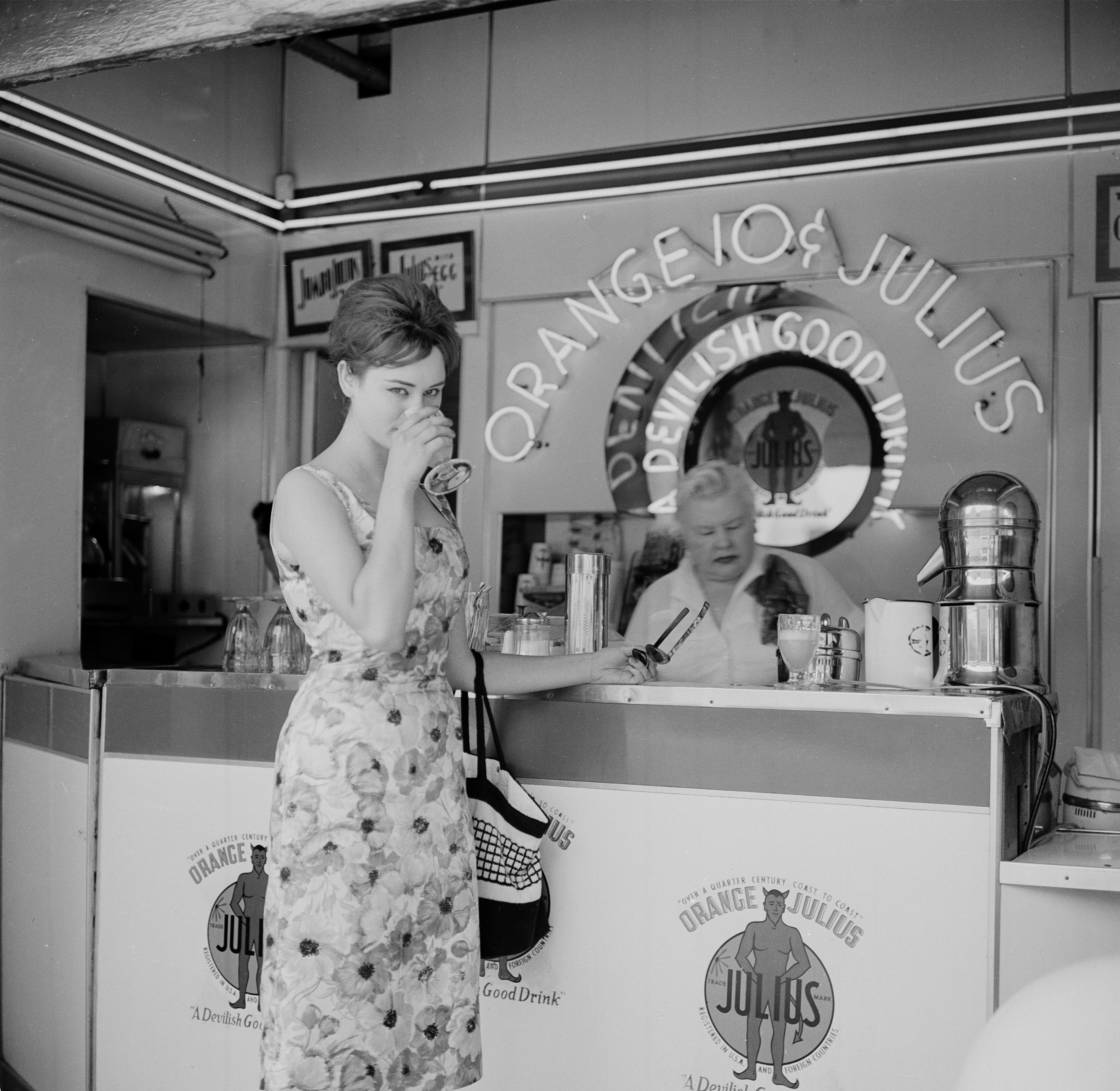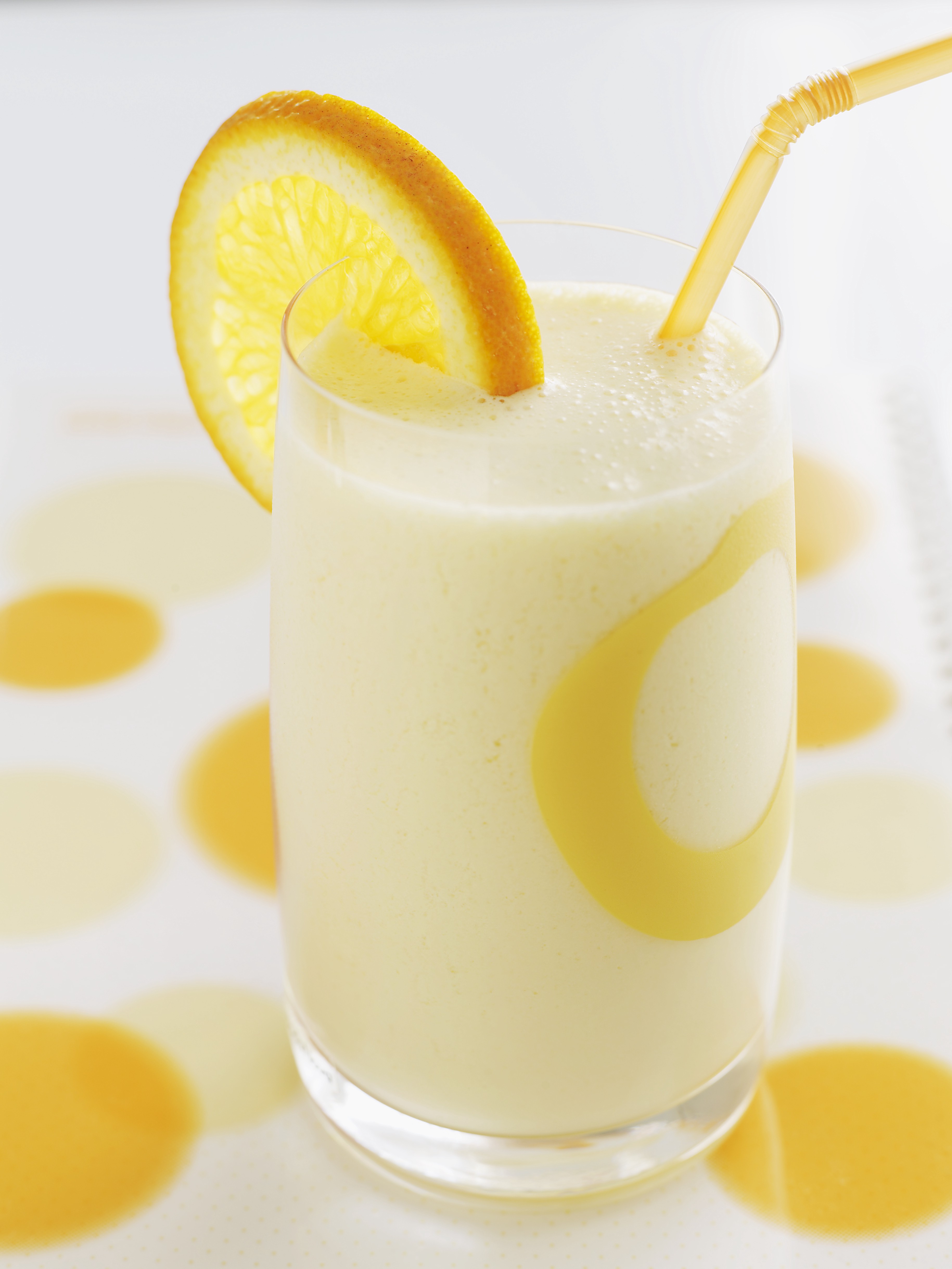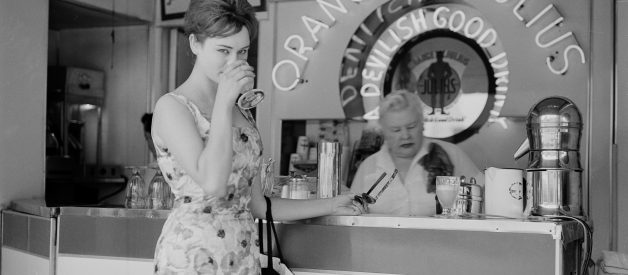And the secret ingredient for a spot-on DIY version
 Actress Pamela Searle poses as she gets an Orange Julius in Los Angeles circa 1959. Photo: Earl Leaf/Michael Ochs Archives/Getty Images
Actress Pamela Searle poses as she gets an Orange Julius in Los Angeles circa 1959. Photo: Earl Leaf/Michael Ochs Archives/Getty Images
A recent column in The Wall Street Journal ? ?Build a Smoother Smoothie. You?ve Earned It? ? offers a rum cocktail version of the sherbet-ey Orange Julius, citing a Los Angeles orange juice salesman named Julius Freed as the inventor of the original drink. Having spent several years mulling over the history of this American fast-food icon for my newish book, ?American Food: A Not-So-Serious History,? I wanted to take a moment to correct the historical record, and also offer my own hot take on the virgin version of the recipe, which has just three ingredients, one of which is ice. Scroll to the bottom if you want to skip the history and get straight to the slush.
The real Orange Julius was Willard Hamlin
Julius Freed ? the Julius in Orange Julius ? was likely a former cigar store owner named Julius Fried, who moved to California from Butte, Montana, according to a 1983 story in the Montana Standard, the area?s local paper. If their assumption was correct, then Julius Freed/Fried likely left Butte in the early 1900s after a bankruptcy and a couple of arrests for encouraging the illegal gambling that took place in the back of his flagship smoke shop.
In 1926, Freed/Fried did open a freshly squeezed orange juice stall in downtown Los Angeles ? in the ground floor of 820 S. Broadway, now home to a sunglasses shop, a secondhand boutique, and a cell phone store ? when those were common all over Southern California. (This was during Prohibition, after all.) But it was Freed/Fried?s real estate agent, Willard ?Bill? Hamlin, who made the first real Orange Julius.
Hamlin convinced Freed/Fried to carry his secret powdered vanilla-ey formula that turns blended orange juice, sugar syrup, and crushed ice into that icy cold, fluffy, Creamsicle-y drink. Hamlin then invested $6,800 and went into business with Freed/Fried and a building contractor named William Larkin.
This part of the story is not really a big secret, either. According to a lengthy, lovely 1987 obituary in the Los Angeles Times, Hamlin had a sensitive stomach and an interest in chemistry, hence his drive to tinker with a new drink. But I believe his real estate background was just as important: As with Ray Kroc and the McDonald brothers some 30 years later, Hamlin seemed to predict the future of fast food: franchising.
Hamlin and Larkin bought out Freed/Fried fairly early on, then they began to build beautiful freestanding Googie-style drive-ins that could take advantage of the automobile. They also sold hamburgers and hot dogs with names like the Mongrel and the Pickle Pooch.
The company was aggressive in its expansion: Classified ads from the mid-1900s show they offered expensive franchises in the heart of big cities ? in 1929, the first in Manhattan opened in Times Square at Broadway and 46th Street ? as well as in smaller suburbs, often for just $500. In the mid-1950s, Hamlin and Larkin were even giving out $100 for leads on new locations. (One of the last operational buildings in Los Angeles, most recently a defunct burger stand, was rejected in 2017 for landmark protection by the city, though the developer who bought the land will incorporate elements of the building into the project.)
When Hamlin retired in 1967 and sold the company to International Industries Inc., there were already more than 400 Orange Julius outlets around the country, plus a few in Canada, Japan, China, Puerto Rico, and several countries in Southeast Asia.
An Orange Julius was meant to be made with *fresh* oranges
The cocktail in ?Build a Smoother Smoothie. You?ve Earned It? is great, nailing the vanilla-orange Creamsicle flavor of the original Orange Julius with a blend of frozen orange concentrate, cream soda, and rum. Now, I love canned concentrate. I will eat it with a spoon, when you can still find it, just like a granita. But if I am making my own Orange Julius? Nope. No way. Because based on my research, the whole point of the original drink was fresh oranges, considering it was created when the Southern California countryside was blanketed with them.
In 1931, in fact, stores were even taking out ads to lure folks to see a Julius being ?made on the new Sunkist extractor.? And up until about 30 or so years ago ? when Orange Juliuses had migrated from those cool stand-alone stores to the mall ? most of the joy of a Julius came from the fresh squeezing of the oranges, both in flavor and in fun-factor.
Even in the early mall years, the juice was still being squeezed from scratch while you waited. But I recently ordered an Orange Julius at my local DQ Grill & Chill in Manhattan: It?s a scoop of powder from a tub, a glug from a box of juice, and a whiz in a blender.
Most Orange Julius freaks you meet, in my experience, are over 30, and I think one reason is because they had a taste of the original. In my mind, the move from fresh oranges marked the beginning of Orange Julius? decline ? at least as a destination. Dairy Queen, after buying the company in 1987, eventually started downsizing the brand, at first by turning most of the Orange Julius shops into combo Dairy Queen ?Treat Centers.?
By the end of 2018, all the stand-alone Orange Juliuses had been renovated into Dairy Queens, and the only thing left of the brand was a few items on the beverage menu and a logo on a cup. I think I may have spotted the only freestanding Orange Julius left while passing through the Vancouver airport in early 2018, but because that?s in Canada, maybe it doesn?t count.
Powders!
According to a 1953 interview with Bill Hamlin in the Argus newspaper in Covina, California, the original Orange Julius secret recipe included ?seven pure food powders.?
One of the best forensically recreated recipes out there comes from Kristina Wolter, an Austin, Texas, food stylist who grew up in Northern California and worked in an Orange Julius in the early 1980s, when she could see the label on the bags of powder and they still squeezed fresh oranges. (And you could still add a raw egg to your drink for extra protein and fluff.)
Wolter posted her excellent recipe on her blog in 2012, and it still gets dozens of new comments a year, many of them fond recollections from Orange Julius fans. In addition to orange juice, ice, and simple syrup, it calls for egg white powder, vanilla extract or vanilla powder, and milk powder.
As Wolter and some of her commenters mention, that blend of powders seems awfully close in flavor to what you get from an instant vanilla pudding mix, which has superfine sugar in it already ? though most are now made with cornstarch instead of eggs and milk powder. As a lazy cook, I loved that idea, and so I tried blending a few teaspoons of it with some freshly squeezed orange juice and ice. Eureka! I?ve never been an Orange Julius freak, but I might become one now. (Plus, then you get to make pudding.)
 Photo: Alexandra Grablewski/DigitalVision/Getty Images
Photo: Alexandra Grablewski/DigitalVision/Getty Images
Easy ?Orange Julius?
Makes: 1 drinkTime: 15 minutes
If you don?t have a fancy high-powered blender like a Vitamix, crush up your ice a little beforehand so the drink comes together quickly, making it appropriately fluffy rather than watery. This is a tip from Wolter, and it makes a difference. If you like your drinks especially sweet, you can add a spoonful or two of sugar, but I think the sweetness detracts from the brightness of the drink. You can also play around with the amount of vanilla pudding powder ? I found that just a few teaspoons gave it the right balance of vanilla, sweetness and creamy mouthfeel, though you might prefer a few more. If you?re really on top of things, refrigerate the oranges first, so they?re nice and cold.
Ingredients
- 1 cups (350 ml) freshly squeezed orange juice, from about 5?6 small juice oranges
- 2 heaping teaspoons instant vanilla pudding mix
- 5 ice cubes (about ? pound or 160 g), crushed if necessary
Instructions
Blend on high until ice is pulverized and the drink is frothy. Drink immediately.


